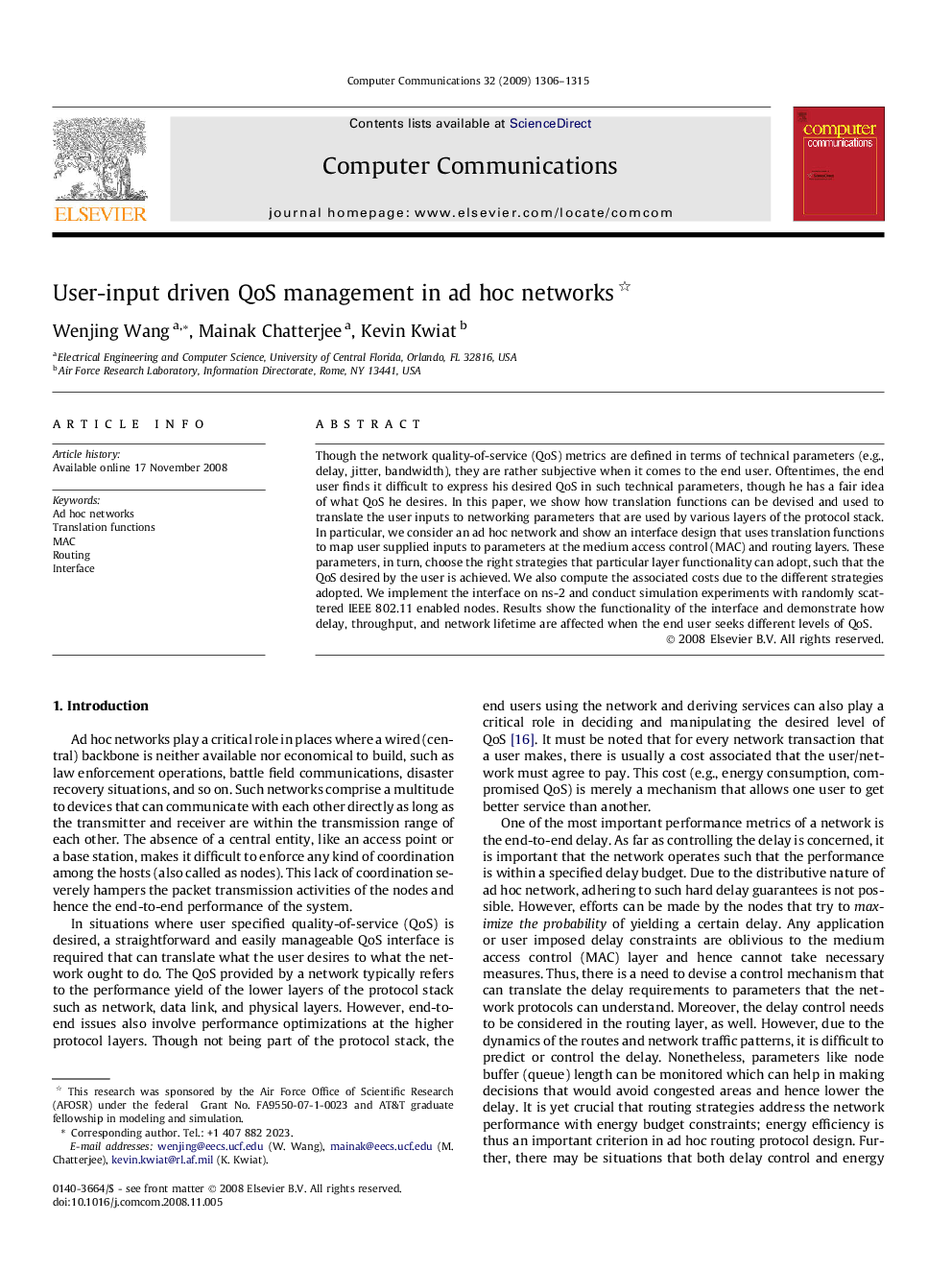| Article ID | Journal | Published Year | Pages | File Type |
|---|---|---|---|---|
| 446987 | Computer Communications | 2009 | 10 Pages |
Though the network quality-of-service (QoS) metrics are defined in terms of technical parameters (e.g., delay, jitter, bandwidth), they are rather subjective when it comes to the end user. Oftentimes, the end user finds it difficult to express his desired QoS in such technical parameters, though he has a fair idea of what QoS he desires. In this paper, we show how translation functions can be devised and used to translate the user inputs to networking parameters that are used by various layers of the protocol stack. In particular, we consider an ad hoc network and show an interface design that uses translation functions to map user supplied inputs to parameters at the medium access control (MAC) and routing layers. These parameters, in turn, choose the right strategies that particular layer functionality can adopt, such that the QoS desired by the user is achieved. We also compute the associated costs due to the different strategies adopted. We implement the interface on ns-2 and conduct simulation experiments with randomly scattered IEEE 802.11 enabled nodes. Results show the functionality of the interface and demonstrate how delay, throughput, and network lifetime are affected when the end user seeks different levels of QoS.
